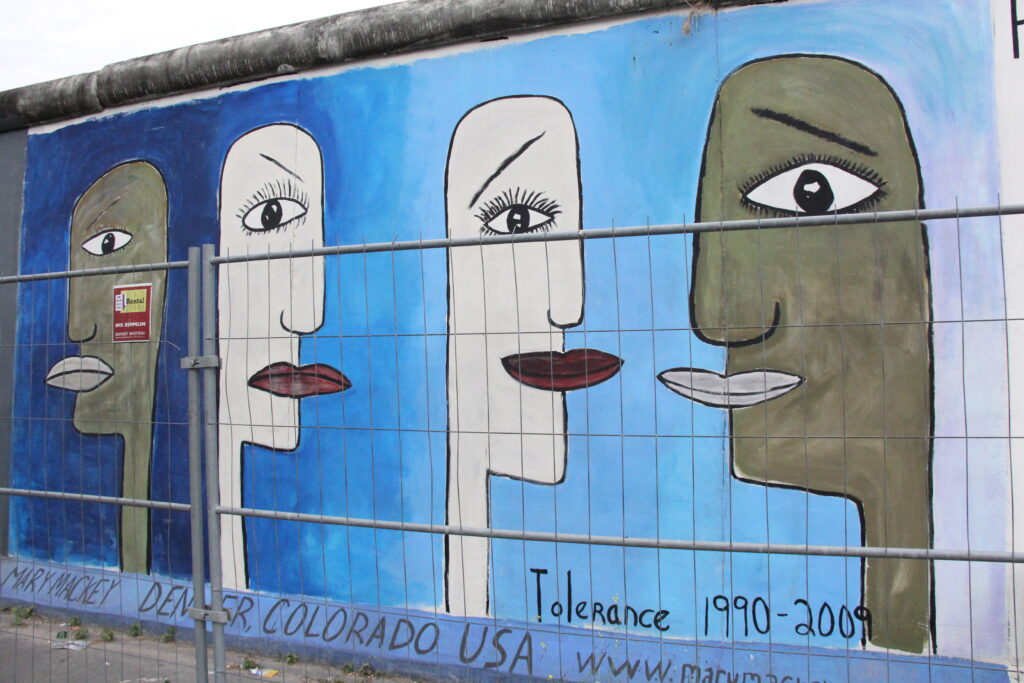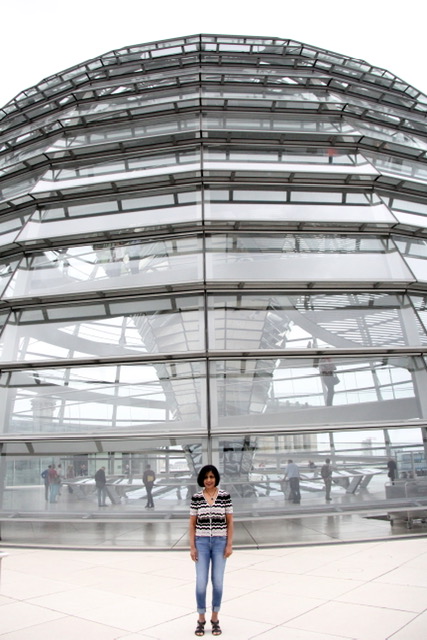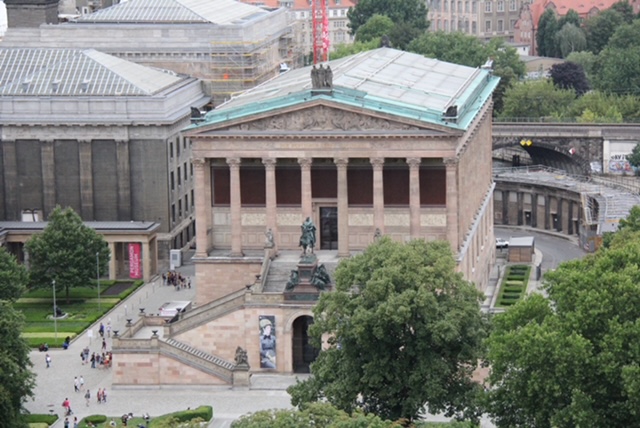We stayed in Berlin for 4 nights and our itinerary was :
- 2 Days – Sites around Berlin
- Half day guided walking tour of Potsdam.
- Day trip to Dresden
To make the most of your visit, I would recommend spending at least 2 days in the city. This will allow you to explore the iconic attractions such as the Brandenburg Gate, Berlin Wall, and Museum Island, as well as delve deeper into the city’s diverse neighborhoods. If you enjoy spending time in Museums, add another day.
Brandenburg Gate – Built in 1788-1791 and restored in 2002, the Brandenburg Gate is one of the most iconic sights in Berlin and the first stop for every visitor. More than just Berlin’s only surviving historical city gate, this site came to symbolize Berlin’s Cold War division into East and West – and, since the fall of the Wall, a reunified Germany. Architecturally, the sandstone Brandenburg Gate also represents one of the earliest and most attractive examples of a neo-classical building in Germany.

Berlin Wall – Built by East Germany, the Wall completely cut off West from East Berlin from 1961-1989. As you stroll through Berlin, you will notice 2 rows of cobbled stones marking where the Wall once stood. The remains of the Berlin Wall can be seen in quite a few places around Berlin. The East Side Gallery has the longest and best-preserved section of the wall and runs for 1.3 km. In 1990, after the wall had ceased to be functional, the eastern side of the wall was painted by 118 artists from 21 countries, resulting in the longest open air gallery in the world. We walked the entire length of the wall stopping to look at the paintings and painters working on some of the graffiti. ‘The Kiss’ is the most famous artwork on the Berlin East Side Gallery.




Outside the Potsdamer Platz train station, there are 5 pieces of Wall on display covered in art.

Checkpoint Charlie (as named by Western Allies), was the most famous crossing point between East and West Berlin during Cold War (1947-1991). After the reunification of Germany, Checkpoint Charlie became a tourist attraction. Visiting this site is free and is located outdoors near Friedrichstraße.

You will also see world-recognizable billboard signs warning people that they were leaving or entering the American Sector. There is also a museum situated next to the original guardhouse that highlights some of the most interesting attempts made by those trying to escape communist rule.

The Reichstag (German Parliament) was originally completed in 1894 and served as the home of the German Empire’s Imperial Diet until it burned in 1933. It was not used again until after the reunification of Germany, at which point it underwent a 10-year reconstruction and finally became the home of the German Parliament in 1999.


A highlight of the reconstruction of the Reichstag is the replacement dome, the Kuppel. Made of glass, it offers superb views of the surrounding city. The Dome and Terrace can be visited for free but registration is required and can be obtained online. While registration is available on the day, you should expect a two or three hour wait. Free English language audio guides are available.

Berlin Cathedral (Berliner Dom) – Protestant church located in museum island. There is an entrance fee of 7Euros. The church is Berlin’s largest church and is beautiful both outside and inside. The panoramic view from the dome is very popular with visitors. Once the 270 steps have been climbed, a wonderful view opens up over Berlin’s Mitte district with the TV tower, the Spree River and the Nikolai Quarter.


Museum Island – Sandwiched between the River Spree and the Kupfergraben in a 400-meter-long canal, Spree Island—better known as Museum Island (Museumsinsel), is one of the city’s most important UNESCO World Heritage Sites. The museums here include :
- Old Museum (Altes Museum) built in 1830 to house Royal treasures
- New Museum (Neues Museum), opened in 2009 and has Egyptian and classical antiquities
- Old National Gallery (Alte Nationalgalerie), opened in 1876, displays Neoclassical sculpture and paintings from 1815-1848
- Bode Museum houses a collection of Byzantine art and sculpture collection from medieval times to the late 1700s.
- Pergamon features a Museum of Islamic Art, the Ishtar Gate, and reconstructed historic buildings from the Middle East.
- Humboldt Forum opened here in 2019 and houses the Ethnological Museum of Berlin and the Museum of Asian Art.


Grosser Tiergarten and the Victory Column – Literally translated as the “Large Animal Garden,” Berlin’s Grosser Tiergarten has long been a major tourist attraction. Originally a royal hunting reserve, it was transformed into a public park in 1700. Attractively laid out with an abundance of trees and shrubs and expanses of grass and flower borders, the Tiergarten covers 210 hectares and is a favorite spot for relaxation, walking, and boating. The park also contains numerous statues and monuments. There is an 1849 Monument to Frederick Wilhelm III, with reliefs reflecting the King’s peace-loving disposition.



The most famous monument in the park is the massive Victory Column (Siegessaule), a 70-meter-tall structure crowned by an eight-meter-high gold statue of Victoria. The statue, dubbed Golden Lizzy by locals, was completed in 1873. It’s well worth climbing the 285 steps to the top of this magnificent monument for the views over the Tiergarten. And if you look closely, you’ll still see evidence of bullet damage caused during WWII. (3 Euros to climb to the top.

Alexanderplatz – is a bustling and vibrant square and one of the busiest transport hubs in the Berlin area. The plaza has a world clock and the TV tower. The tower is open for access from 9am-11pm. 13Euros to go up.


Gendarmenmarkt – An 18th century square with three impressive buildings: the German Cathedral, the French Cathedral, and the Berlin concert hall Konzerthaus.

Olympiastadion Berlin – Stadium built for 1936 Olympic games, is now used for international football matches. You can take a train from Brandenburg to the stadium which is a 20 min ride. We spent about an hour walking around the stadium outside and inside and took a train back to Berlin (20 min).



Jewish Memorial – The Memorial to the 6 million Jewish victims of the Holocaust. It was officially opened on 10 May 2005. The site has 2,711 concrete slabs arranged in a grid pattern on a sloping field.
